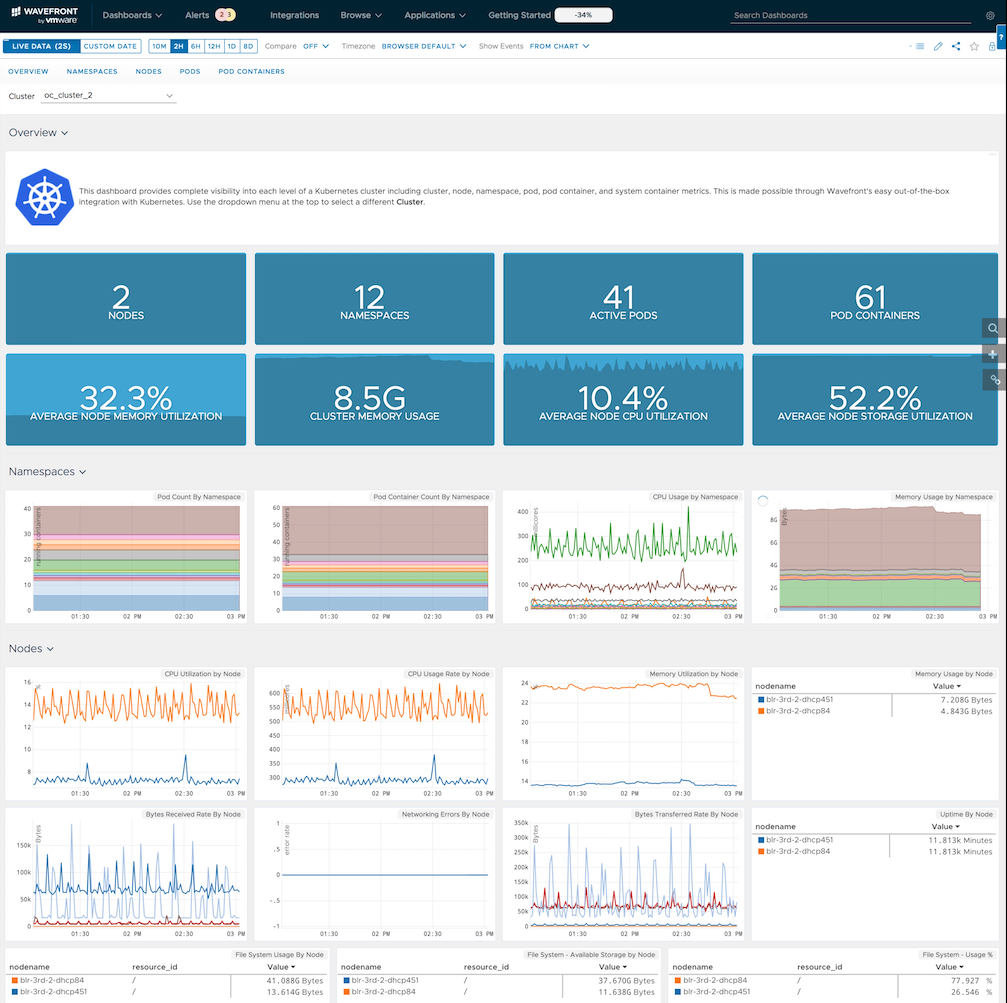Red Hat blog
This is a guest post by Gordana Neskovic (@nesgor), a Senior Product Marketing Manager for Wavefront by VMware. Gordana has held Data Scientist / AI Architect roles at Wells Fargo, Pinterest, and SFO-ITT. Her current interests are at the intersection of cloud monitoring, operational analytics, and data science. She holds a Ph.D. in Electrical Engineering.
Special Thank You to Anirban Dey (@Anirbandey2011), and Srinivas Kandula (@kanduls) for contribution to this blog.
Anirban is a Product Line Manager at Wavefront by VMware. He is currently involved with expanding the Wavefront Integration portfolio and building new Wavefront integrations. He loves to learn and play with all the latest technologies around the developer platform/ecosystem and solve critical customer problems. In his spare time, he loves to travel, explore various cuisines, and listen to music.
Srinivas is a Staff Engineer at Wavefront By VMware. He is currently working on adding more integrations to Wavefront. He loves to learn and play with the latest technologies and build solutions with them. In his spare time, he loves to go cycling, swimming, and running.
Red Hat OpenShift is an enterprise Kubernetes platform intended to make the process of developing, deploying and managing cloud-native applications easier, scalable and more flexible. Wavefront by VMware provides enterprise-grade observability and analytics for OpenShift environments across multiple clouds. Wavefront ingests, analyzes and visualizes OpenShift telemetry – metrics, histograms, traces, and span logs – across the full-stack, including distributed applications, containers, microservices, and cloud infrastructure.
As a result of Wavefront’s collaboration with Red Hat, you can now get automated enterprise observability for OpenShift that’s full stack, through the Red Hat OpenShift Certified Wavefront Operator for OpenShift 4.1 and later. This Operator is available in Operator Hub embedded in OpenShift, a registry for finding Kubernetes Operator-backed services.
With the Red Hat OpenShift Certified Wavefront Operator, engineers, developers, and OpenShift operators get:
- Accelerated and automated transition into Kubernetes and applications observability
- Streamline day 2 observability operations - from deployments of the Wavefront Collector for Kubernetes and Wavefront proxies to managed configurations and upgrades
- Automated full-stack enterprise observability and deep insight analytics across OpenShift environments
Figure 1: Complete Visibility into OpenShift Cluster Nodes, Namespaces, Pods, Containers
What’s the Red Hat OpenShift Certified Wavefront Operator?
The Red Hat OpenShift Certified Wavefront Operator installs, upgrades and constantly checks the health of the Wavefront Collector for Kubernetes. It reduces costs and risks of managing observability for OpenShift environments and applications at scale. It also improves time-to-value by pretesting and expediting the Wavefront Collector for Kubernetes deployment and configuration.
In essence, the Red Hat OpenShift Certified Wavefront Operator is a method of packaging, deploying, and managing OpenShift observability using the Kubernetes APIs and kubectl tooling. The Operator runs in a pod on the cluster and interacts with the Kubernetes API server. It installs a Wavefront Collector for Kubernetes instance on each node in the OpenShift cluster, taking advantage of resource definitions, an extension mechanism in Kubernetes. Unless you specify you want to send data to Wavefront using direct ingestion, the Operator also installs and configures one or more Wavefront proxies. The Operator watches for Wavefront Collectors for Kubernetes instances and is notified when they are being added or modified. When the Operator receives a notification, it starts running a loop to ensure that all the required connections between the Wavefront Collector for Kubernetes and the OpenShift environment are available and are configured in the way the user expressed in the specification.
The Red Hat OpenShift Certified Wavefront Operator also provides for the new Wavefront Collector for Kubernetes versions to be deployed using a rolling update, avoiding downtime and making it easy to stay up-to-date.
Through continuous certification, the interoperability and safety of the Red Hat OpenShift Certified Wavefront Operator is verified on an ongoing basis, with a fast turnaround for security updates.
Installing Red Hat OpenShift Certified Wavefront Operator
It’s easy to install the Red Hat OpenShift Certified Wavefront Operatorby following these steps:
- Using the OpenShift administrator console web interface, browse to the OpenShift OperatorHub
- Search for Wavefront Operator
- Click on the Wavefront Operator tile
- Go through Wavefront Operator Overview and check all the operator metadata and links
- Click on the Install button
- Follow the step-by-step installation instructions
Enterprise Observability for OpenShift that’s Automated and Full-Stack
Once the Red Hat OpenShift Certified Wavefront Operator is installed and configured, Wavefront:
- Automatically recognizes Kubernetes services
- Discovers Kubernetes workloads and instruments Java-based services across any cloud
- Populates pre-packaged multi-layered Kubernetes dashboards
- Reports at scale, up to 1-sec resolution (sub-1-sec with histograms), streaming health and SLO metrics for OpenShift clusters, nodes, pods, and containerized applications
- Provides detailed information about Kubernetes environment operations and autoconfigure a set of Kubernetes-related alerts
Figure 2: Wavefront Enterprise Observability for OpenShift, Full-Stack
You can now start using and customizing the out-of-the-box pre-configured dashboards. You can alleviate code issues by understanding Kubernetes system metrics and instantly troubleshoot containers and applications microservices. With Wavefront’s powerful analytics, you can correlate and quickly drill down across applications running on OpenShift, containers, Kubernetes, and cloud.
Also, engineers such as developers and SREs can deep-dive into any incident using distributed tracing to trace transactions across distributed services and identify root cause in seconds. With Wavefront’s sophisticated AI-driven performance analytics and trends prediction, you can proactively get an alert on anomalies across containerized applications running on OpenShift environments.
Ready to Get Started?
If you’d like immediate, deep visibility into your entire OpenShift environment, sign-up for a Wavefront free trial. With the Red Hat OpenShift Certified Wavefront Operator , you will benefit from accelerated transition into enterprise observability for OpenShift that’s automated and full stack. Wavefront streamlines day 2 observability operations, providing deep insight analytics across your entire OpenShift environment, including containerized applications, Kubernetes, and the underlying infrastructure.


